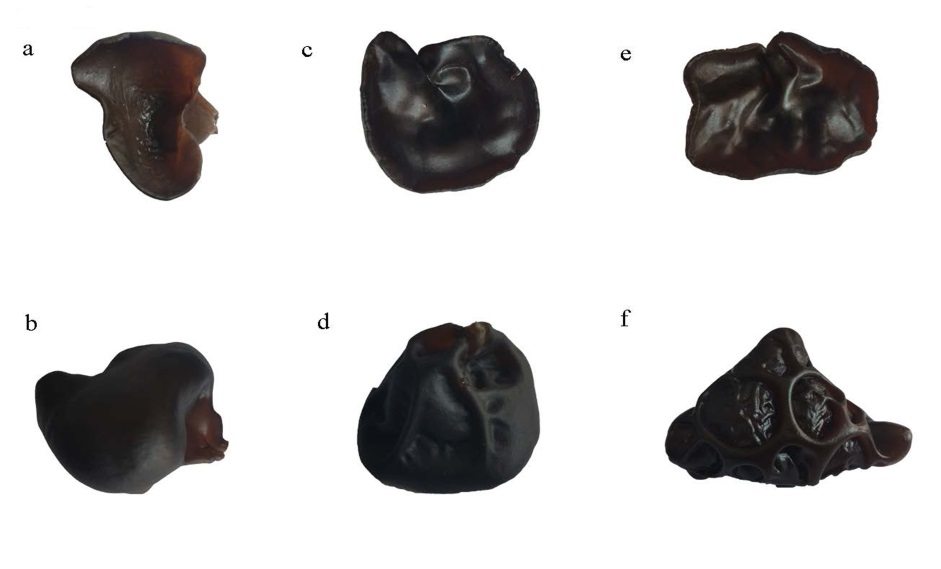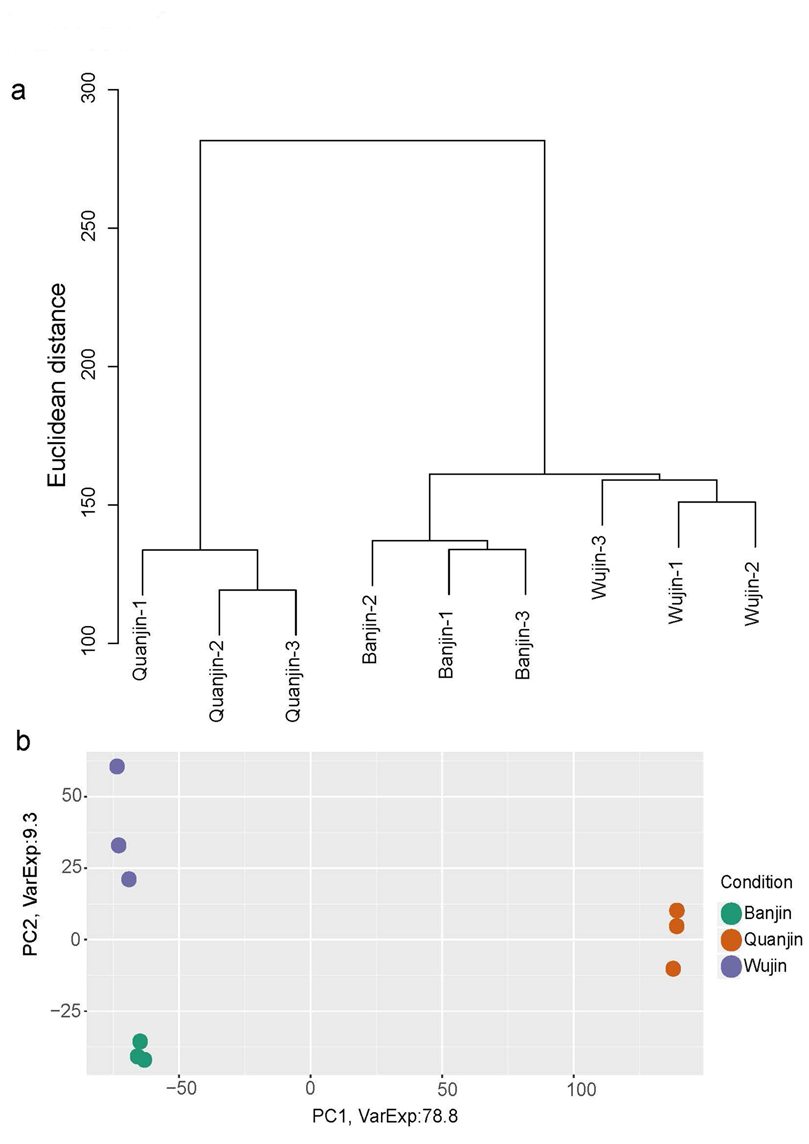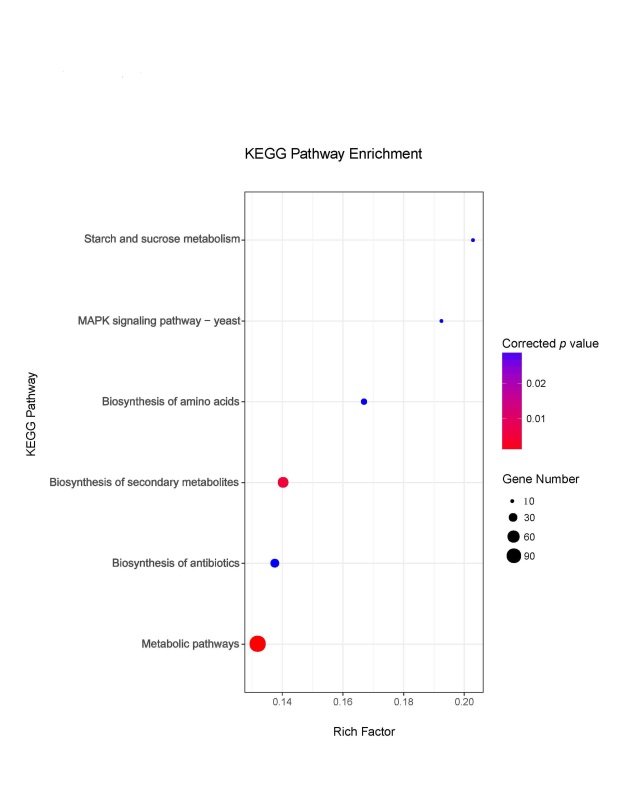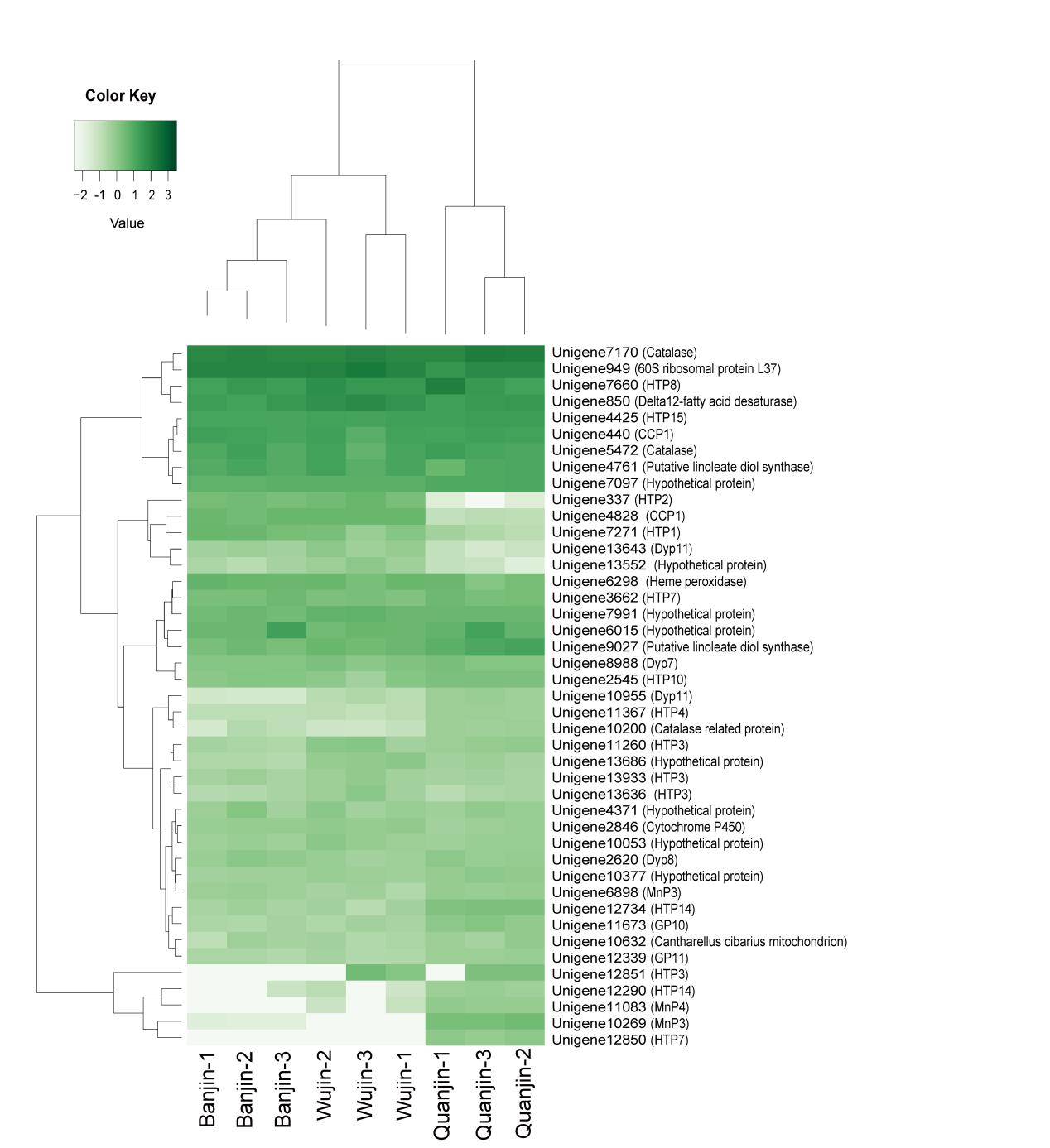Led by Professors TANG Yuguo and GAO Shan, researchers in Suzhou Institute of Biomedical Engineering and Technology (SIBET) collaborated with Dr. WANG Hui of University of Oxford, perform comparative transcriptome analysis on the three major cultivars of Hemuer. Related results entitled “Comparative transcriptome analysis reveals relationship of three major domesticated varieties of Auricularia auricula-judae” have been published in Scientific Reports (SCI IF: 4.122).
Hemuer (Auricularia auricula-judae), also known as Jew's ear, wood ear and jelly ear, has important values for food and medical industry. In addition, it has anti-tumor, anti-oxidation, anti-thrombosis and hypoglycemic properties.
In the past decade, the studies of Hemuer have been focused on the methods for breeding, the understandings of phylogeny and genetic diversity. Lack of knowledge on the molecular level is a major bottleneck for the research.
Wujin (smooth), Banjin (partially wrinkled), and Quanjin (fully wrinkled) are the three main cultivars of Hemuer in China. Their surface folding patterns of the fruiting bodies are obviously different, so as their nutritional value and tasting characteristics.
The scientists analysed 13937 unigenes (universal gene), and 12813 unigenes were annotated to known genes.
Principal Component Analysis (PCA) revealed that Quanjin displayed different gene expression patterns to those of Banjin and Wujin, suggesting an independent origin of Quanjin from Northern China whereas Banjin and Wujin might have a common ancestor with a southern origin.
The KEGG pathway analysis revealed that the surface wrinkle characteristics was relevant to six biological functions, such as starch and sucrose metabolism, MAPK signaling pathway, biosynthesis of amino acids, biosynthesis of secondary metabolites, biosynthesis of antibiotics and metabolic pathways. That suggested differences in synthesis, accumulation and metabolism of bioactive components among the three cultivars. This finding provided signpost information to research and development activities of medical and pharmaceutical components.
Furthermore, by analyzing the expression profile of the peroxidase-like gene of Hemuer, it was found that the peroxidase-like genes in Quanjin showed a unique expression pattern, suggesting that Quanjin may have specific values in the context of research and development of industrial bioremediation enzymes. The within-cultivar variation in Wujin was greater than that of between-cultivar in Banjin, which has values for developing and breeding novel cultivars.
In addition, the researchers also found 1,124 novel unigenes that likely play important roles in the specific functions of Hemuer: such as the production of bioactive molecules with medicinal value of antioxidant and anti-tumor activities. The discovery of new genes provides potential research targets for further study.
This research work provides essential information for further research and development on the biochemical and pharmaceutical properties of Hemuer. Meanwhile, it also provides genome-wide evaluation on biodiversity of Hemuer to promote protection and utilization of nature genetic resources, thus could help crop breeding, enhance the capability of Hemuer industry and strengthen the local economy.

Figure 1. Pictures show the apical and basal sides of the fruiting bodies of Wujin (Panels a & b), Banjin (Panels c & d), and Quanjin (Panels e & f).

Figure 2. Gene expression relationship between cultivars: (a) Hierarchical clustering map based on gene expression in the sample, the X axis represents the sample, and the Y axis represents the Euclidean distance between the samples. (b) Principal component analysis results, the first two components PC1 and PC2 explain the 88.1% difference between the varieties. As can be seen from the above figure, at the between-cultivar level, Quanjin is different from the Banjin and Wujin. At the within-cultivar level, Wujin displays a large between-individual variation.

Figure 3. KEGG pathway associated with fruiting body wrinkle: up- or down-regulated gene scatter plots associated with fold formation, with the X-axis representing enrichment factors (enrichment factor = number of genes in the pathway / number of all annotated genes in the pathway). The size represents the number of genes, and the color of the dots represents the magnitude of the corrected P value.

Figure 4. Cluster expression map of 43 peroxidase genes of Hemuer in three cultivar varieties: The unigene ID and its blast annotation results are indicated on the right side. This result is consistent with the results of principal component analysis. (Image by GAO Shan)
Keywords: Hemuer (Auricularia auricula-judae); universal gene; three cultivars; value.
Contact
XIAO Xintong
Suzhou Institute of Biomedical Engineering and Technology, Chinese Academy of Sciences (http://www.sibet.cas.cn/)
Phone: 86-512-69588013
E-mail: xiaoxt@sibet.ac.cn